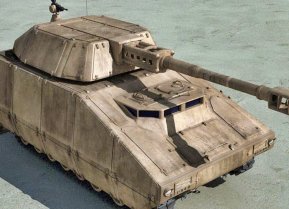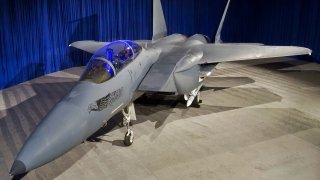Boeing F-15SE Silent Eagle: How the F-15EX Was Born?
Boeing's F-15SE Silent Eagle was an attempt to create a stealth version of the classic F-15. Sadly, no nation ever went on to buy the fighter jet.
F-15 Silent Eagle profile - why did it fail? - The latest F-15EX iteration recently made headlines after breaking several records concerning ordnance and tonnage capabilities.
While this formidable fighter is considered by many to be one of the best non-stealth platforms to fly the skies, other F-15 Eagle variants have not been so lucky.
Boeing once pitched the F-15SE “Silent Eagle,” hoping this fighter would be the bridge linking traditional attributes and emerging stealth technologies a few years back. However, a lack of market reception and the introduction of fifth-generation fighters led to this potential variant’s downfall.
Even though the F-15 Eagle is one of the most respected platforms globally, the Silent Eagle could not get past these hurdles.
Introducing the F-15 Eagle family
During the height of the Cold War, the Soviet Union debuted its new MiG-25 high-speed and high-altitude interceptor. American officials immediately became concerned that its airframes were falling behind in terms of capabilities.
By the end of the 1960’s, four manufacturing giants were tasked with submitting design proposals for a new air superiority platform. Other requirements included that the jet must have a maximum take-off weight of 40,000 pounds for the air-to-air role with a top speed of Mach-2.5 (times the speed of sound).
Additionally, the service required a twin-engine arrangement as this would enable the airframe to respond to throttle changes more quickly. General Dynamics, McDonnell Douglas, North American Rockwell, and Fairchild all put forth proposals, and ultimately, the U.S. Air Force selected McDonnell Douglas as the winner.
The original F-15 single variant and TF-15 twin-seat variant (later known as F-15A and F-15B) were powered by Pratt & Whitney F100 engines. An M61 Vulcan gun replaced the planned 25-mm Ford-Philco GAU-7 cannon after several development issues emerged. The Eagle took its maiden flight in 1972 and successive variants were introduced to service over the years. The F-15C and F-15D models entered service by the decade's end, equipped with Production Eagle Package improvements, including additional internal fuel and increased maximum take-off weight.
Down the line, F-15 would be fitted with armament enhancements as well. A Programmable Armament Control Set introduced in the early 1980s allowed for advanced versions of the Aim-7, AIM-9, and AIM-120A missiles and improved electronic warfare capabilities.
Many of these models were deployed to support the U.S. war effort during Operation Desert Storm in 1991.
Introducing Boeing’s proposed F-15SE Silent Eagle fighter:
In the late 2000s, Boeing introduced a potential new Eagle variant- the F-15SE. The fighter was intended to sport fifth-generation features to mimic the recently introduced F-22 Raptor.
An internal weapons carriage and radar-absorbent material are just two components the Silent Eagle was designed to feature. While the jet’s design was innovative with outwardly canted vertical stabilizers, Boeing’s middle-ground approach of maintaining the old while bringing in the new didn’t cut.
At first, some nations, including South Korea and Saudi Arabia, were interested in what the F-15SE Silent Eagle offered. Still, ultimately, they desired to acquire a platform that didn’t require compromise.
FAQ: What were the F-15SE Silent Eagle’s pros and cons?
According to Military Today, the F-15SE Silent Eagle was more advanced and capable than other new-generation counterparts like the Dassault Rafale, Eurofighter Typhoon, and Russian Sukhoi Su-35. Each jet was equipped with the same two Pratt & Whitney F100-229 afterburning turbofan engines as the F-15E.
Although performances between the Silent Eagle and its sister variant were quite similar, the real difference could be seen in the avionics department. The Silent Eagle was designed with an APG-82 AESA radar, digital electronic warfare system, Lockheed Martin Sniper targeting system and other electronic improvements.
While the Silent Eagle never made it to the finish line, some of its components and designs have been incorporated into the latest F-15 iteration. The F-15EX Eagle II can notably shoot farther than any other fighter in the Air Force’s fleet, according to Boeing. The new jet also does not sacrifice payload for survivability, making it the potential new backbone of the service. The Eagle II can reportedly carry more than 13.5 tons of weapons, much higher than previous variants. This capability has even led analysts to call the platform a “bomb truck.”

The F-15EX Eagle II is an enhanced version of the proposed Silent Eagle fighter. Perhaps the platform’s only real flaw is its lack of stealth. However, alongside fifth-generation fighters or flown within the service’s Next-Generation Air Dominance (NGAD) program, the latest Eagle variant could still holds its own in the modern air space.
About the Author
Maya Carlin is an analyst with the Center for Security Policy and a former Anna Sobol Levy Fellow at IDC Herzliya in Israel. She has by-lines in many publications, including The National Interest, Jerusalem Post, and Times of Israel. You can follow her on Twitter: @MayaCarlin.
All images are Creative Commons.


